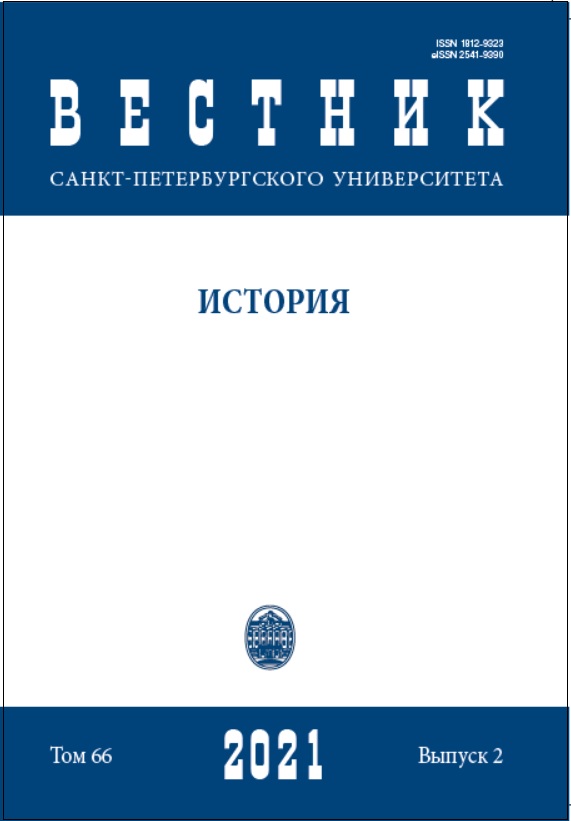Looking for Arabia Nova
DOI:
https://doi.org/10.21638/spbu02.2021.207Abstract
The administrative structure of the Roman Empire is still not fully understood. Some questions remain unanswered due to the unique nature of historical sources. Several notions are referenced only once or in a very unclear context. For example, the notion of “New Arabia” (ἡ νέα (ἐπαρχεία) Ἀραβία) referenced in series of papyri of the 2nd and 4th century A.D. The explanation for the earlier documents is clear: the newly created province of Arabia is mentioned there. A letter P. Oxy 50. 3574 (beginning of the 4th cent. A.D.) is a much more complicated example of such denomination. Scholars believe that it referred to a province, though Roman sources do not mention any province called “Arabia,” except from the one created in 106 A.D. under Trajan. In fact, “New Arabia” in P. Oxy 50. 3574 does not refer to a province (ἐπαρχία), newly created around Eleutheropolis instead of the former nomos Arabia in Egypt or in Idumaea, as is assumed in contemporary studies. “New Arabia” in this document most likely refers to τοπαρχία (“district”, normally, a part of a nomos). The borders of this τοπαρχία have changed several times and it moved from Lower to Upper Egypt. The enigmatic notion of “ἀπὸ ὁρίων Ἐλευθεροπό̣λεως τῆς Νέας Ἀραβείας” maybe interpreted that the “New Arabia” did not refer to the city of Eleutheropolis but rather to its borders: “…from the Eleutheropolis – the border of New Arabia”. Whether Eleutheropolis lied inside or outside this border remains an open question. “New Arabia” cannot be connected with information of Laterculus Veronensis or Tabula Peutingeriana.
Keywords:
Roman Arabia, province, administrative structure, Egypt, papyri, Eleutheropolis, Oxyrinchos
Downloads
Downloads
Published
How to Cite
Issue
Section
License
Articles of "Vestnik of Saint Petersburg University. History" are open access distributed under the terms of the License Agreement with Saint Petersburg State University, which permits to the authors unrestricted distribution and self-archiving free of charge.





